Your cart is currently empty!
Tag: Advantages
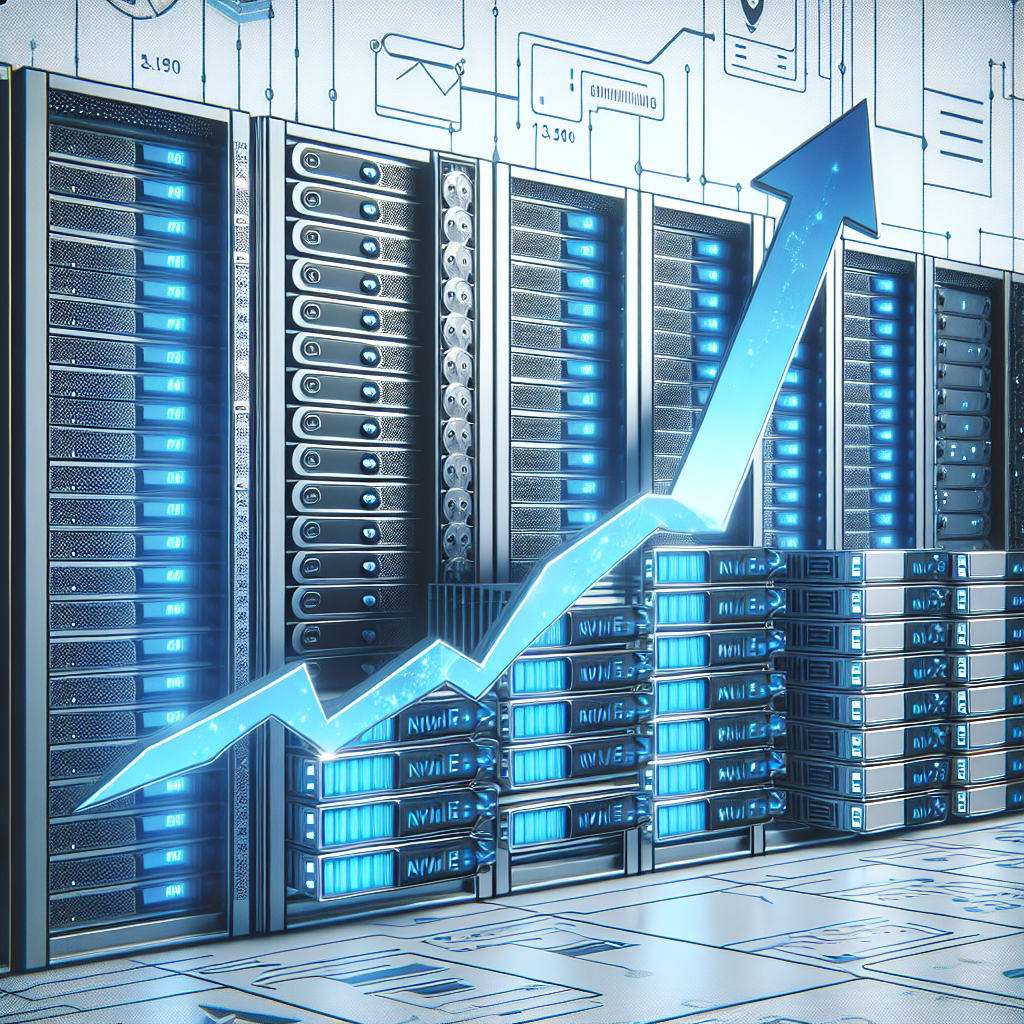
The Advantages of NVMe: Why This Storage Protocol is Gaining Popularity
NVMe, or Non-Volatile Memory Express, is a storage protocol that has been gaining popularity in recent years. This technology offers a number of advantages over traditional storage protocols, making it a preferred choice for many businesses and consumers.One of the main advantages of NVMe is its speed. NVMe drives can deliver much faster read and write speeds compared to traditional storage protocols such as SATA. This means that data can be accessed and transferred more quickly, leading to faster boot times, application loading times, and overall system performance.
In addition to speed, NVMe also offers lower latency, which can significantly improve the responsiveness of applications and reduce lag in data-intensive tasks. This is especially important for businesses that rely on real-time data processing and high-performance computing.
Another advantage of NVMe is its scalability. NVMe drives can support a larger number of queues and commands compared to traditional storage protocols, allowing for more efficient multi-threaded operations and better utilization of system resources. This makes NVMe an ideal choice for data centers and enterprise environments where high-performance storage is essential.
NVMe also offers improved power efficiency compared to traditional storage protocols. This can lead to lower energy consumption and reduced heat generation, which can help extend the lifespan of hardware and reduce overall operating costs.
Overall, the advantages of NVMe make it a compelling choice for businesses and consumers looking to improve the speed, performance, and efficiency of their storage systems. As NVMe technology continues to evolve and become more widely adopted, it is likely to become the standard for high-performance storage in the future.

Exploring the Advantages and Limitations of Hard Disk Drives in Modern Computing
Hard disk drives (HDDs) have been a staple in computing for decades, providing a reliable and cost-effective storage solution for personal computers, servers, and other devices. However, with the rise of solid-state drives (SSDs) in recent years, the advantages and limitations of HDDs have come into sharper focus. In this article, we will explore the advantages and limitations of HDDs in modern computing.Advantages of Hard Disk Drives:
1. Cost-Effectiveness: One of the primary advantages of HDDs is their cost-effectiveness. HDDs are generally cheaper per gigabyte compared to SSDs, making them an attractive option for budget-conscious consumers and businesses.
2. Large Storage Capacity: HDDs are available in larger storage capacities than SSDs, making them ideal for storing large amounts of data such as media files, documents, and applications.
3. Longevity: HDDs have a longer lifespan compared to SSDs, as they are not susceptible to wearing out from constant read and write operations. This makes them a reliable option for long-term data storage.
4. Compatibility: HDDs are compatible with a wide range of devices and operating systems, making them a versatile storage solution for a variety of computing needs.
Limitations of Hard Disk Drives:
1. Slower Performance: One of the main limitations of HDDs is their slower read and write speeds compared to SSDs. This can result in slower boot times, file transfers, and application loading times.
2. Mechanical Failure: HDDs contain moving parts, such as spinning disks and read/write heads, which can be prone to mechanical failure over time. This can lead to data loss and the need for expensive data recovery services.
3. Power Consumption: HDDs consume more power than SSDs, leading to higher energy costs and reduced battery life in laptops and other portable devices.
4. Fragility: HDDs are more susceptible to damage from physical shocks and vibrations compared to SSDs, which have no moving parts. This makes HDDs less suitable for use in portable devices or environments where they may be exposed to rough handling.
In conclusion, while HDDs continue to offer cost-effective and high-capacity storage solutions for many computing needs, they do have limitations in terms of performance, reliability, and power consumption. As technology continues to advance, SSDs are becoming increasingly popular for their faster speeds, lower power consumption, and greater durability. Ultimately, the choice between HDDs and SSDs will depend on the specific needs and priorities of the user, weighing the advantages and limitations of each type of storage solution.
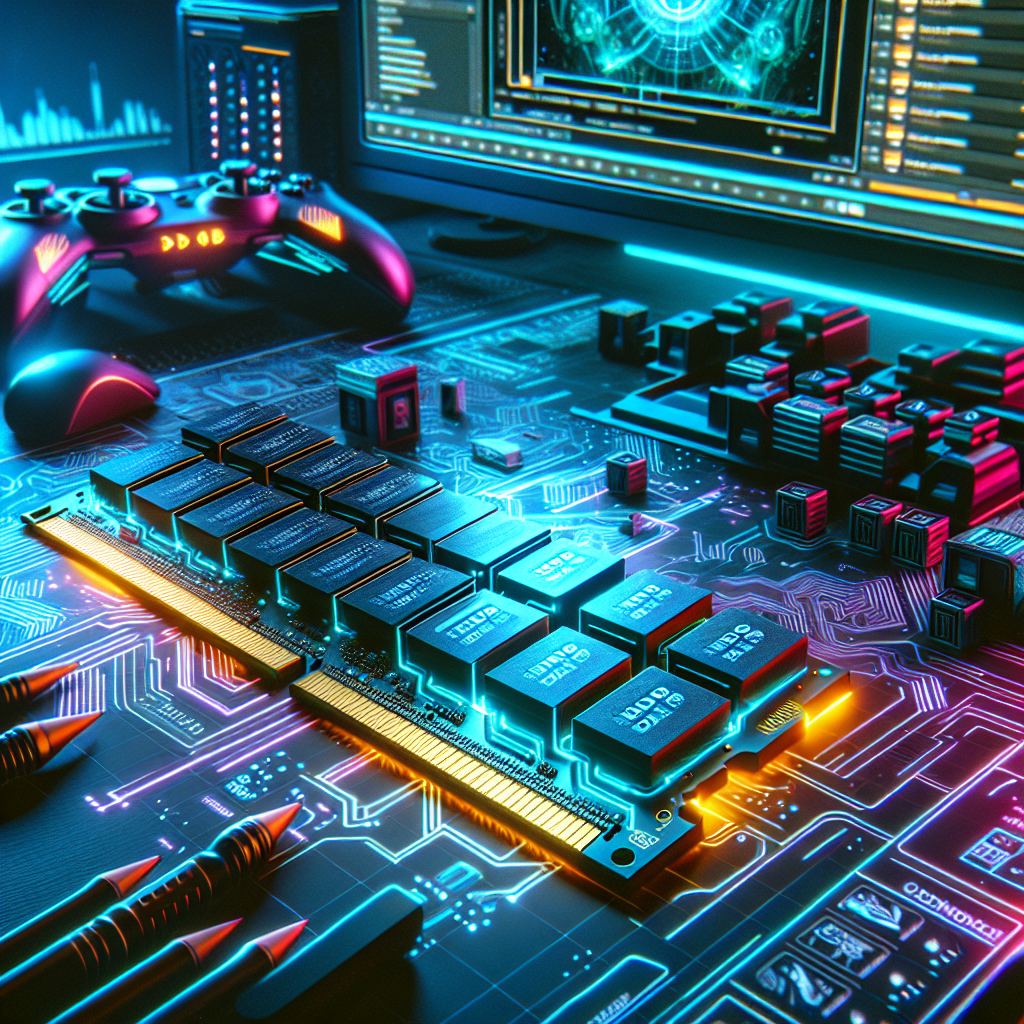
Understanding the Advantages of 64GB DDR5 for Gamers and Content Creators
In the world of gaming and content creation, having a powerful and reliable computer system is key to delivering top-notch performance. One crucial component that can greatly enhance the overall experience is the RAM, or Random Access Memory. With the recent release of DDR5 technology, gamers and content creators now have access to even faster and more efficient memory options, such as the 64GB DDR5.One of the main advantages of upgrading to 64GB DDR5 is the significantly improved speed and bandwidth it offers. DDR5 RAM has a much higher data transfer rate compared to its predecessors, allowing for quicker loading times, smoother gameplay, and faster rendering speeds when working on content creation projects. This means that gamers can enjoy seamless gameplay with minimal lag, while content creators can work on their projects more efficiently without experiencing any performance bottlenecks.
Another advantage of 64GB DDR5 is the increased capacity it provides. With 64GB of RAM, gamers and content creators can run multiple demanding applications simultaneously without any issues. This is particularly beneficial for content creators who often work with large files and complex software programs that require a lot of memory to operate smoothly. Having ample RAM capacity ensures that the system can handle the workload without slowing down or crashing.
Moreover, 64GB DDR5 is also more energy-efficient compared to previous generations of RAM. This means that not only will users experience improved performance, but they will also benefit from lower power consumption, resulting in a more environmentally friendly and cost-effective system in the long run.
Overall, upgrading to 64GB DDR5 can greatly enhance the gaming and content creation experience for enthusiasts and professionals alike. With its improved speed, capacity, and energy efficiency, this cutting-edge memory technology is a must-have for anyone looking to take their computer system to the next level. Whether you’re a hardcore gamer or a content creator working on demanding projects, investing in 64GB DDR5 will undoubtedly elevate your computing experience to new heights.
#Understanding #Advantages #64GB #DDR5 #Gamers #Content #Creators,64gb ddr5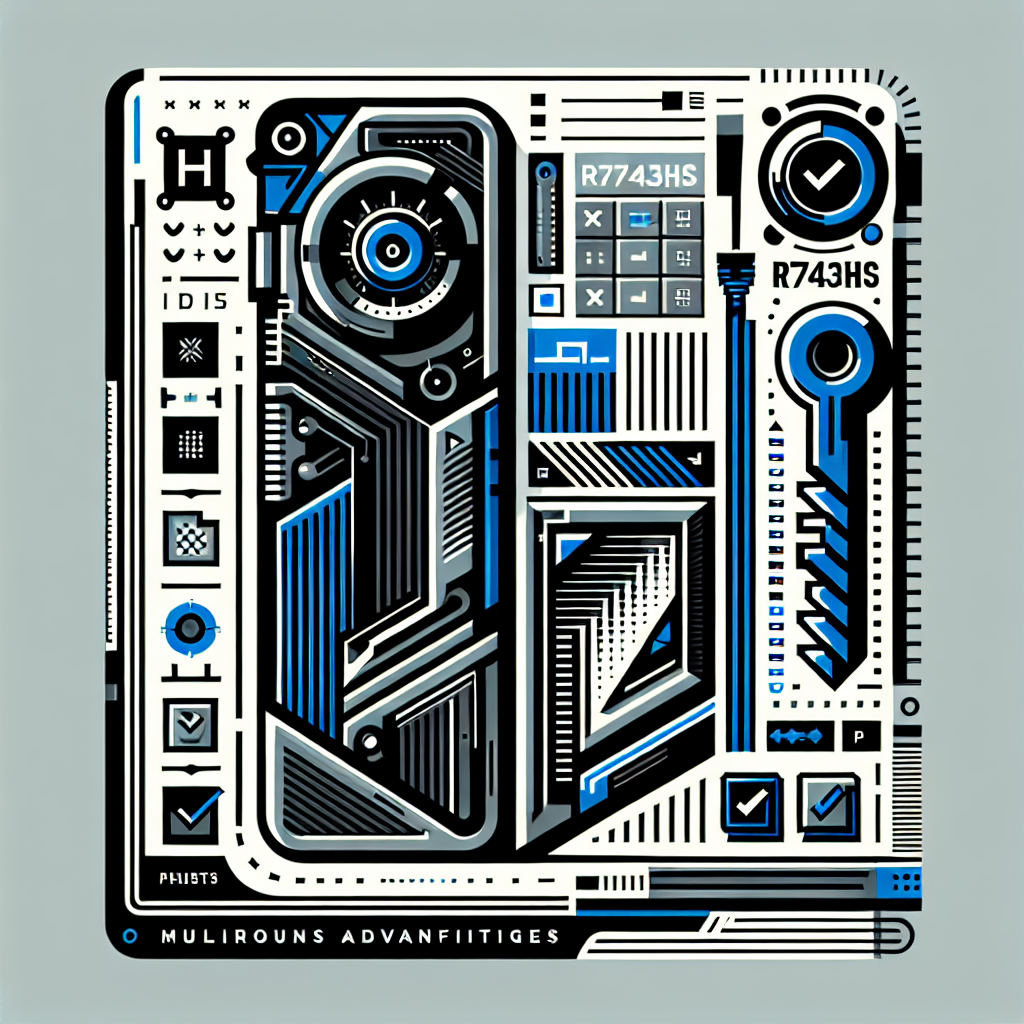
Unlocking the Potential of the R77435HS: Practical Uses and Advantages
The R77435HS is a powerful and versatile device that has the potential to revolutionize various industries. This cutting-edge technology offers a wide range of practical uses and advantages that can help businesses and individuals achieve their goals more efficiently and effectively.One of the key advantages of the R77435HS is its ability to unlock the full potential of data analysis. With its advanced processing capabilities, this device can quickly and accurately analyze large amounts of data to provide valuable insights and trends. This can help businesses make informed decisions, identify opportunities for growth, and optimize their operations.
Another practical use of the R77435HS is in the field of artificial intelligence and machine learning. By harnessing the power of this device, developers can create sophisticated algorithms and models that can automate tasks, predict outcomes, and improve overall efficiency. This can lead to significant cost savings and increased productivity for businesses in various industries.
The R77435HS also has practical applications in the field of healthcare. With its high-performance computing capabilities, this device can assist healthcare professionals in diagnosing diseases, analyzing medical images, and developing personalized treatment plans. This can lead to improved patient outcomes, reduced healthcare costs, and a more efficient healthcare system overall.
In addition to these practical uses, the R77435HS also offers a number of advantages over other devices on the market. Its compact size and lightweight design make it easy to transport and deploy in various environments. Its energy-efficient design also helps to reduce operating costs and minimize environmental impact.
Overall, the R77435HS is a versatile and powerful device that has the potential to unlock new opportunities and drive innovation in a wide range of industries. By harnessing its capabilities, businesses and individuals can achieve their goals more efficiently and effectively, ultimately leading to increased success and competitiveness in the market.
#Unlocking #Potential #R77435HS #Practical #Advantages,r77435hs
Advantages and Disadvantages of Non-volatile Memory Solutions
Non-volatile memory solutions have become increasingly popular in recent years due to their ability to retain data even when power is turned off. These solutions offer several advantages, but they also come with their own set of disadvantages. In this article, we will discuss the advantages and disadvantages of non-volatile memory solutions.Advantages:
1. Data Retention: One of the biggest advantages of non-volatile memory solutions is their ability to retain data even when power is turned off. This means that users do not have to worry about losing their data in the event of a power outage or system failure.
2. Fast Access Times: Non-volatile memory solutions typically have faster access times compared to traditional hard drives. This means that users can access their data quickly and efficiently, making them ideal for applications that require fast data retrieval.
3. Durability: Non-volatile memory solutions are more durable than traditional hard drives, as they do not have any moving parts. This makes them less susceptible to physical damage and can help extend the lifespan of the device.
4. Energy Efficiency: Non-volatile memory solutions require less power to operate compared to traditional hard drives. This can help reduce energy consumption and lower operating costs for businesses and individuals.
Disadvantages:
1. Cost: Non-volatile memory solutions are typically more expensive than traditional hard drives. This can be a barrier for some users, especially those on a tight budget.
2. Limited Storage Capacity: Non-volatile memory solutions generally have smaller storage capacities compared to traditional hard drives. This can be a disadvantage for users who require a large amount of storage space for their data.
3. Limited Lifespan: Non-volatile memory solutions have a limited number of write cycles before they start to degrade. This means that they may not be suitable for applications that require frequent data writes or updates.
4. Compatibility Issues: Non-volatile memory solutions may not be compatible with all devices or operating systems. This can be a disadvantage for users who need to transfer data between different systems or devices.
In conclusion, non-volatile memory solutions offer several advantages, including data retention, fast access times, durability, and energy efficiency. However, they also come with their own set of disadvantages, such as cost, limited storage capacity, limited lifespan, and compatibility issues. It is important for users to weigh these pros and cons carefully when considering non-volatile memory solutions for their data storage needs.
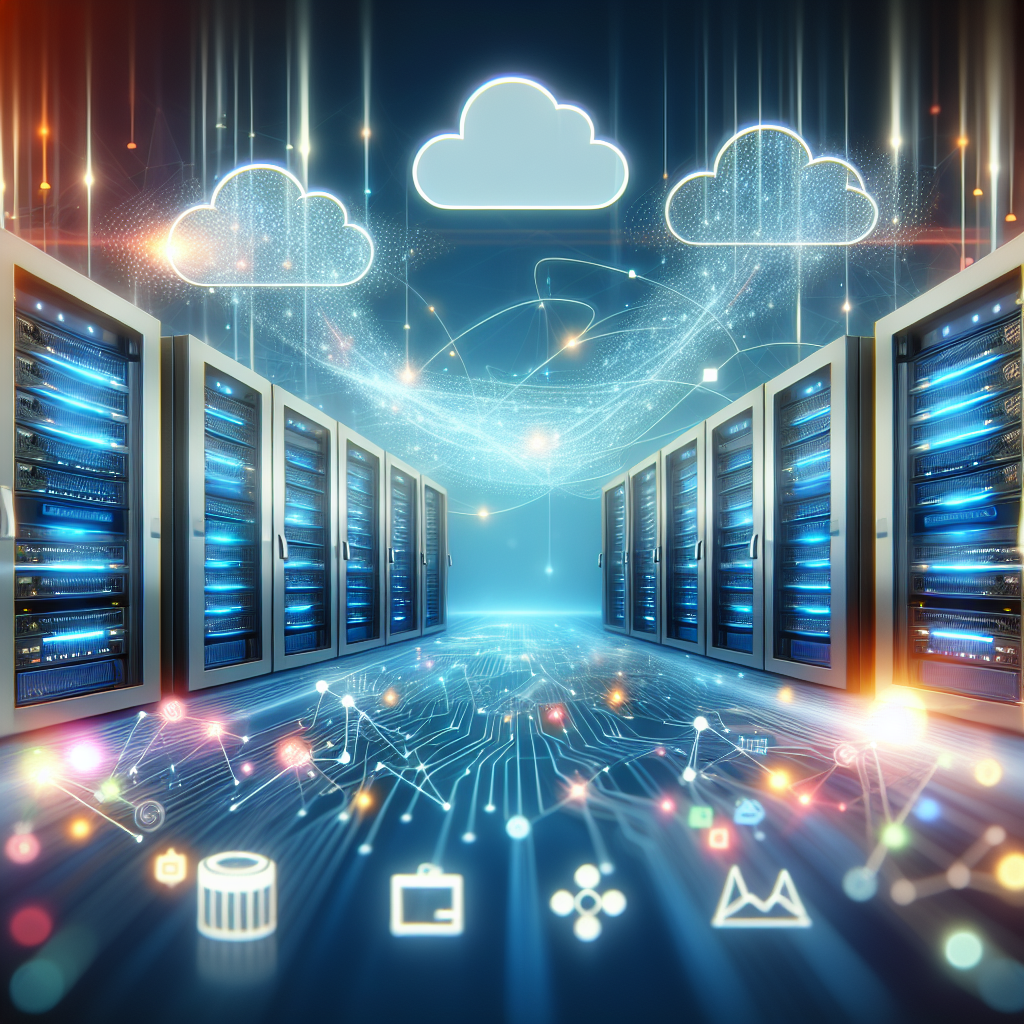
The Advantages of Cisco’s Cloud Computing Infrastructure
Cisco’s cloud computing infrastructure offers a multitude of advantages for businesses looking to streamline their operations and increase efficiency. With its robust network architecture and advanced security features, Cisco’s cloud computing platform provides a reliable and secure environment for businesses to store and access their data.One of the key advantages of Cisco’s cloud computing infrastructure is its scalability. Businesses can easily scale up or down their computing resources based on their needs, without the need for expensive hardware upgrades. This flexibility allows businesses to adapt to changing demands and grow their operations without incurring significant costs.
Another advantage of Cisco’s cloud computing infrastructure is its high level of reliability. With Cisco’s extensive network of data centers and redundant systems, businesses can rest assured that their data is safe and accessible at all times. This high level of reliability minimizes the risk of downtime and ensures that businesses can continue to operate smoothly without interruption.
In addition to scalability and reliability, Cisco’s cloud computing infrastructure also offers advanced security features to protect businesses’ sensitive data. Cisco’s cloud platform includes encryption, access controls, and monitoring tools to safeguard against cyber threats and unauthorized access. This level of security is crucial for businesses that handle sensitive information and need to comply with strict data protection regulations.
Furthermore, Cisco’s cloud computing infrastructure allows businesses to streamline their operations and increase efficiency. By centralizing data storage and access, businesses can eliminate the need for multiple on-premises servers and systems, reducing costs and simplifying management. This centralized approach also enables businesses to access their data from anywhere, at any time, making collaboration and remote work easier and more efficient.
Overall, Cisco’s cloud computing infrastructure offers businesses a reliable, scalable, and secure platform to store and access their data. With its advanced network architecture and security features, businesses can trust that their data is safe and accessible at all times. By leveraging Cisco’s cloud computing infrastructure, businesses can streamline their operations, increase efficiency, and focus on driving growth and innovation.

Cost Savings and Scalability: The Advantages of Cloud Computing for Startups
In today’s fast-paced business environment, startups are constantly looking for ways to cut costs and increase efficiency. One solution that has become increasingly popular in recent years is cloud computing. This technology allows businesses to store and access data and applications over the internet, rather than on physical servers. This not only offers cost savings but also scalability, making it an ideal solution for startups looking to grow.One of the biggest advantages of cloud computing for startups is cost savings. Traditional IT infrastructure requires significant upfront investment in hardware, software, and IT staff. With cloud computing, startups can avoid these costs by paying only for the resources they use on a pay-as-you-go basis. This means they can scale up or down as needed without having to make a large initial investment.
In addition to cost savings, cloud computing offers startups scalability. As a startup grows, its computing needs will also increase. With cloud computing, startups can easily scale their resources up or down to meet changing demands. This flexibility allows startups to quickly adapt to market changes and seize new opportunities without being held back by limited IT resources.
Another advantage of cloud computing for startups is improved security. Cloud service providers invest heavily in security measures to protect their customers’ data. This means startups can benefit from enterprise-level security without having to invest in expensive security solutions themselves.
Furthermore, cloud computing offers startups greater flexibility and mobility. Employees can access data and applications from anywhere with an internet connection, making it easier to collaborate and work remotely. This flexibility can help startups attract top talent and improve productivity.
Overall, cloud computing offers startups a cost-effective, scalable, and secure solution for their IT needs. By leveraging the power of the cloud, startups can focus on growing their business without being held back by traditional IT constraints. It’s no wonder why so many startups are turning to cloud computing as a key driver of their success.
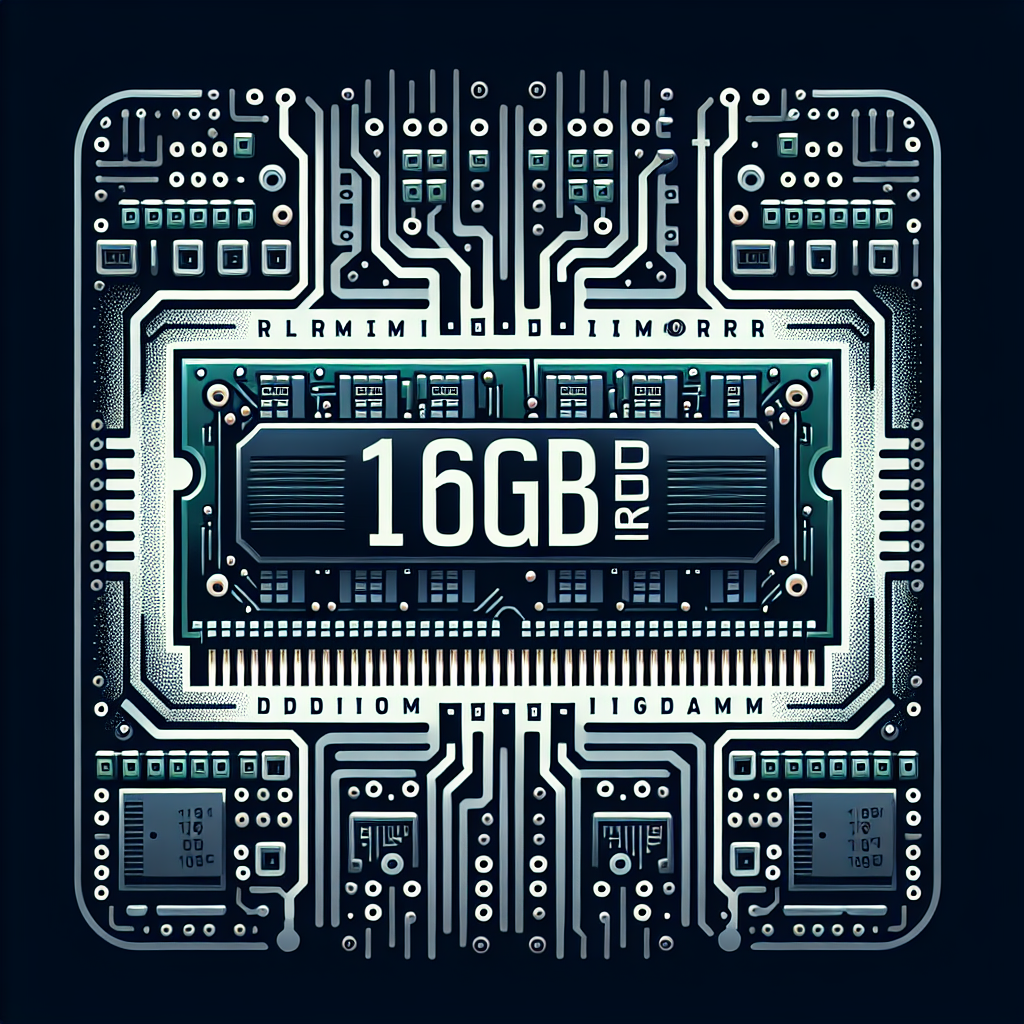
Understanding the Advantages of 16GB DDR5 RAM in Today’s Technology Landscape
In today’s fast-paced and technologically advanced world, having the right amount of RAM in your computer is crucial for optimal performance. With the introduction of 16GB DDR5 RAM, users can enjoy a host of advantages that can help them keep up with the demands of modern technology.One of the main advantages of 16GB DDR5 RAM is its speed and efficiency. DDR5 RAM is the latest generation of memory technology, offering faster data transfer speeds and lower power consumption compared to its predecessors. This means that tasks such as video editing, gaming, and multitasking can be carried out smoothly and without any lag or delays.
Another key advantage of 16GB DDR5 RAM is its increased capacity. With 16GB of memory, users can run multiple applications simultaneously without experiencing any slowdowns. This is particularly useful for professionals who need to work on resource-intensive tasks such as 3D rendering, video editing, or data analysis.
Furthermore, 16GB DDR5 RAM is also beneficial for gamers. With more memory available, gamers can enjoy smoother gameplay, faster loading times, and improved overall performance. This is especially important for modern games that require a lot of resources to run smoothly.
In addition, 16GB DDR5 RAM is also future-proof. As technology continues to advance, software and applications will become more demanding in terms of memory requirements. By investing in 16GB DDR5 RAM now, users can ensure that their systems will be able to handle the demands of future software updates and releases.
Overall, 16GB DDR5 RAM offers a range of advantages that can greatly enhance the performance and efficiency of modern computers. With its speed, capacity, and future-proofing capabilities, it is an essential component for anyone looking to stay ahead in today’s technology landscape.
#Understanding #Advantages #16GB #DDR5 #RAM #Todays #Technology #Landscape,16gb ddr5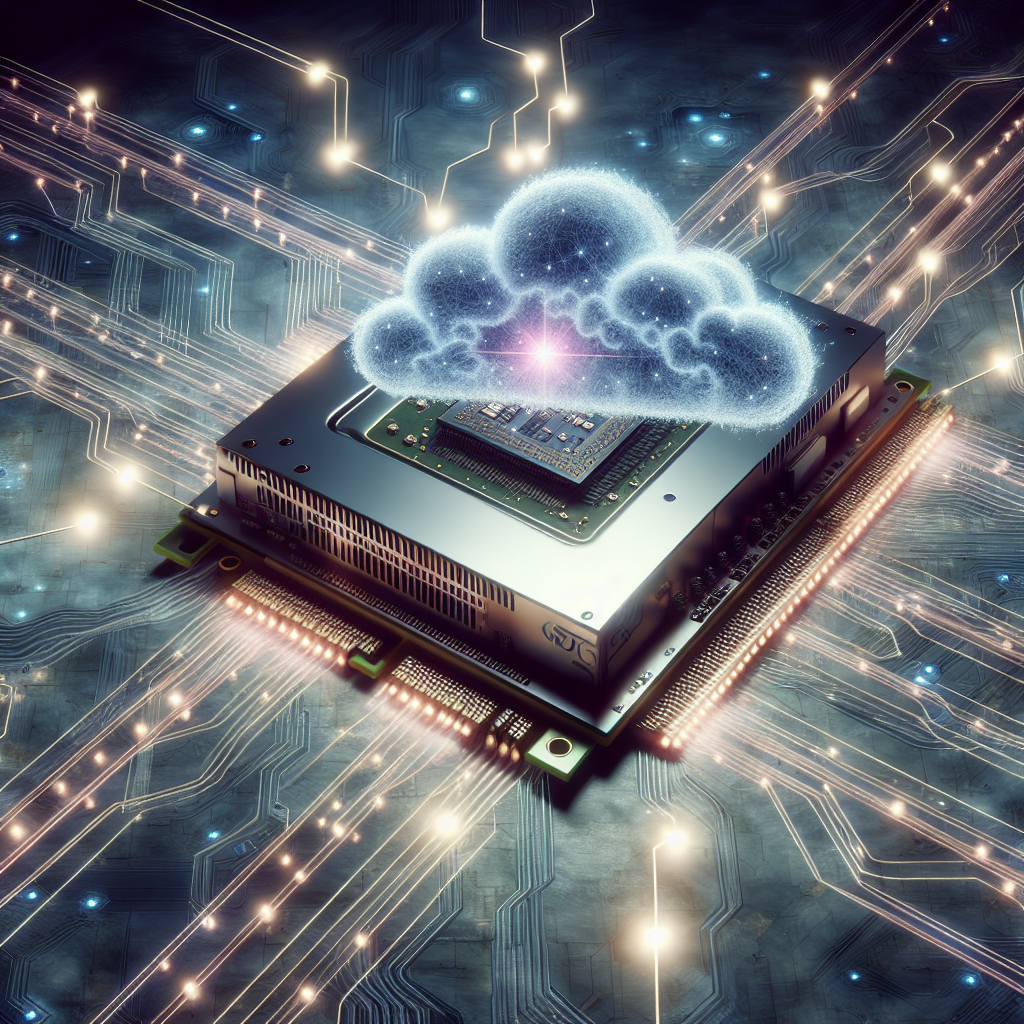
The Advantages of NVIDIA GPU Technology in Cloud Computing
Cloud computing has revolutionized the way we store, manage, and access data. By leveraging the power of the cloud, businesses and individuals can tap into vast resources without the need for expensive hardware and infrastructure. One key technology that has greatly enhanced the capabilities of cloud computing is NVIDIA GPU technology.NVIDIA is a leading provider of graphics processing units (GPUs) that are used in a wide range of applications, from gaming to data processing. In recent years, NVIDIA GPUs have become a crucial component in cloud computing environments due to their ability to accelerate complex computations and handle large amounts of data with ease.
One of the main advantages of using NVIDIA GPU technology in cloud computing is its ability to speed up processing times. GPUs are designed to handle parallel processing tasks, which means they can perform multiple calculations simultaneously. This makes them ideal for tasks that require a high level of computational power, such as machine learning, artificial intelligence, and data analytics.
In addition to faster processing times, NVIDIA GPUs also offer improved performance and efficiency compared to traditional CPUs. This is because GPUs are specifically designed for tasks that require large-scale data processing, whereas CPUs are more general-purpose processors. By offloading compute-intensive tasks to GPUs, cloud computing providers can improve the overall performance of their services and reduce latency for users.
Another advantage of using NVIDIA GPU technology in cloud computing is its scalability. GPUs can be easily added to existing cloud infrastructure to increase processing power and capacity as needed. This flexibility allows cloud computing providers to scale their services to meet the demands of their customers without the need for costly hardware upgrades.
Furthermore, NVIDIA GPUs are well-suited for deep learning and neural network applications, which are becoming increasingly popular in the field of artificial intelligence. By leveraging the power of NVIDIA GPUs, cloud computing providers can offer cutting-edge AI solutions to their customers, enabling them to analyze large datasets and make more informed decisions.
Overall, the advantages of NVIDIA GPU technology in cloud computing are clear. From faster processing times to improved performance and scalability, NVIDIA GPUs are helping to drive innovation in the cloud computing industry. As the demand for high-performance computing continues to grow, NVIDIA GPU technology will play an increasingly important role in shaping the future of cloud computing.
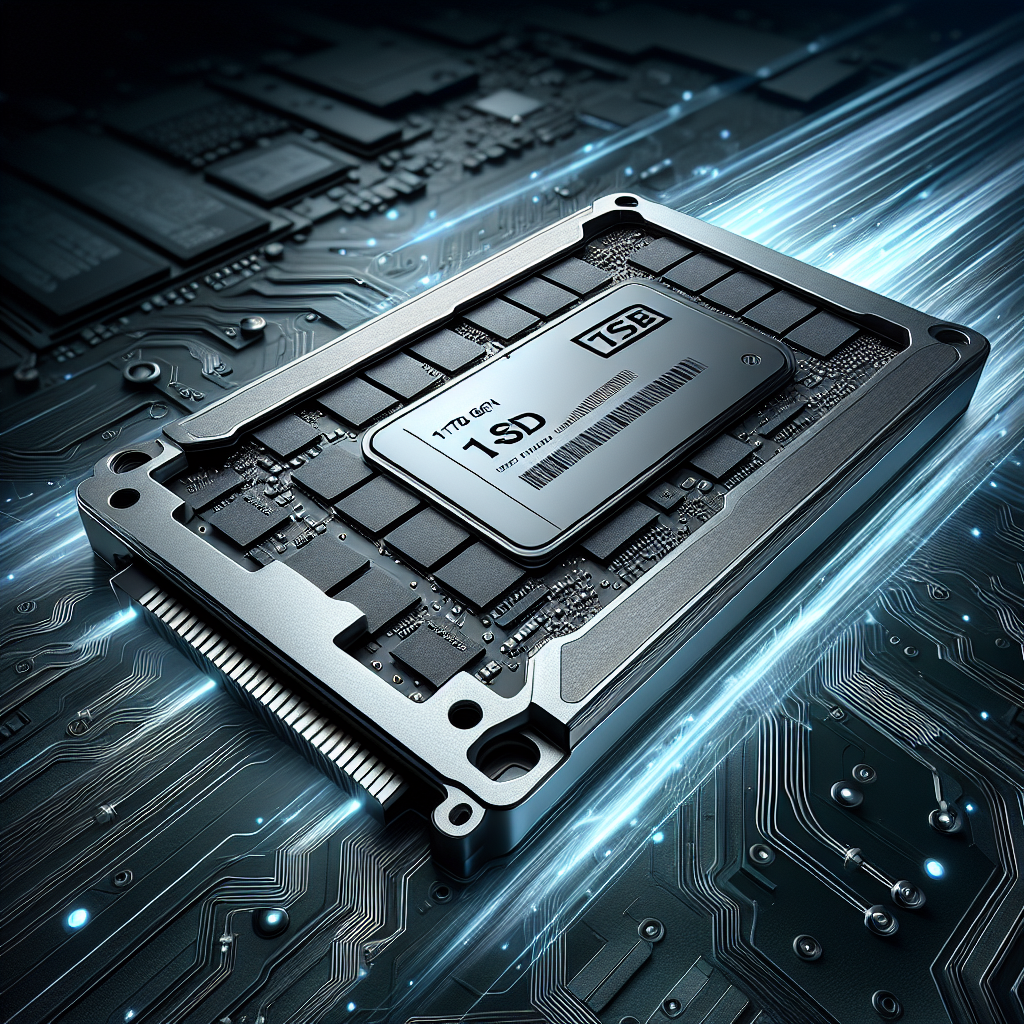
Maximizing Storage Capacity: The Advantages of a 1TB PCIe Gen4 SSD
With the increasing demand for faster and more efficient storage solutions, PCIe Gen4 SSDs have quickly become the go-to choice for users looking to maximize their storage capacity. One of the most popular options on the market is the 1TB PCIe Gen4 SSD, which offers a range of advantages over traditional storage options.One of the key advantages of a 1TB PCIe Gen4 SSD is its speed. With read and write speeds that are significantly faster than traditional SATA SSDs, PCIe Gen4 SSDs can dramatically reduce load times and improve overall system performance. This is particularly important for tasks such as gaming, video editing, and other resource-intensive applications that require quick access to large amounts of data.
In addition to speed, a 1TB PCIe Gen4 SSD also offers a significant increase in storage capacity. With 1TB of storage space, users can store a large number of files, applications, and media without having to worry about running out of space. This is especially useful for users who work with large files or need to store a large amount of data for their work or personal projects.
Another advantage of a 1TB PCIe Gen4 SSD is its reliability. PCIe Gen4 SSDs are known for their durability and longevity, making them a reliable choice for users who need a storage solution that can withstand heavy use. This can help to reduce the risk of data loss and ensure that users can access their files and applications whenever they need them.
Finally, a 1TB PCIe Gen4 SSD offers a significant improvement in energy efficiency compared to traditional storage options. PCIe Gen4 SSDs consume less power than traditional hard drives, which can help to reduce energy costs and extend the battery life of laptops and other devices. This makes them an environmentally friendly choice for users who are conscious of their energy consumption.
Overall, a 1TB PCIe Gen4 SSD offers a range of advantages over traditional storage options, including faster speeds, increased storage capacity, reliability, and energy efficiency. Whether you are a gamer, content creator, or business professional, investing in a 1TB PCIe Gen4 SSD can help you maximize your storage capacity and improve your overall computing experience.
#Maximizing #Storage #Capacity #Advantages #1TB #PCIe #Gen4 #SSD,1tb pcie gen4 ssd
